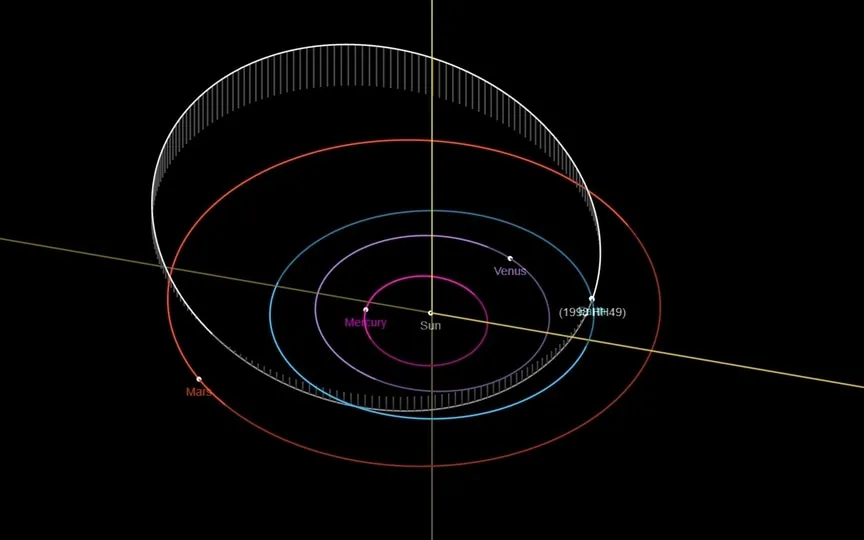Asteroid with Potential to Cause Harm to Earth to Fly By Today – Get the Facts
Asteroids, despite their appearance as floating rocks in space, are more complex than they seem. They can be categorized into three types based on their structural composition. The most frequently encountered asteroids are S-type, consisting of carbon-rich substances. In contrast, S-type asteroids are less common and primarily composed of silicate minerals. The least abundant are M-type asteroids, primarily made up of metal. Recently, NASA embarked on a mission to explore a metal-rich asteroid named 16 Psyche, which is estimated to be worth an astonishing $10 quintillion, surpassing the entire global economy.
In a separate development, NASA has released details of an asteroid expected to make its closest approach to Earth today.
We are now on WhatsApp. Click to join.
Asteroid 1998 HH49: Details of the close approach
Using its advanced ground and space telescopes, NASA has tracked down a mammoth asteroid whose orbit brings it very close to Earth today. According to the Center for Near-Earth Object Studies (CNEOS), the asteroid, named Asteroid 1998 HH49, is heading toward Earth and could make its closest approach to the planet today, October 17.
This Earth-like space rock is expected to make its closest approach to the planet at a distance of only 1.1 million kilometers and at a speed of 53233 kilometers per hour, which is much faster than Intercontinental Ballistic Missiles (ICBM)! It is important to note that although it has been called a near-Earth asteroid due to its close flyby distance, it is not expected to actually impact the planet.
It belongs to Apollo’s group of Near-Earth Asteroids, which are Earth-passing space rocks with semi-major axes larger than Earth’s. These asteroids are named after the huge 1862 Apollo asteroid discovered by German astronomer Karl Reinmuth in the 1930s.
How big is the asteroid?
NASA has called the asteroid a potentially dangerous asteroid. Only celestial bodies longer than 492 feet that pass Earth at a distance of less than 7.5 million kilometers are defined as such, and asteroid 1998 HH49 meets both of these requirements. Asteroid 1998 is between 429 and 1,050 feet across.
The asteroid orbits the Sun every 705 days, when its closest distance from it is 115 million kilometers and its furthest distance is 348 million kilometers.




